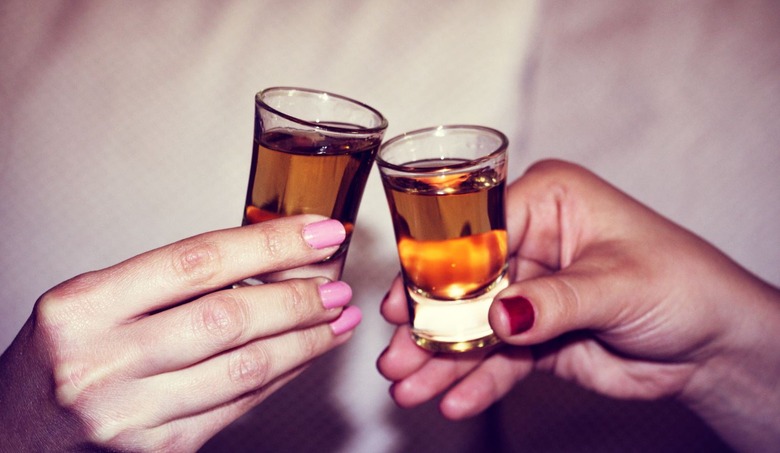Shot Glasses Come In A Bunch Of Different Sizes, Which Is Weird
If you've spent any time doing shots (and we're assuming that because you're reading this you have), you've probably noticed that a shot isn't a shot isn't a shot. Some shot glasses are wee, some are about average-seeming, and some are gargantuan. So what gives? Why can't there just be one standard shot?
Contrary to popular belief, people haven't been doing shots from shot glasses for very long. In fact, shot glasses didn't even really exist at all before the 1930s, so all those Westerns are (gasp!) historically inaccurate. Jiggers were used to measure spirits and make cocktails, but the actual drinking was done from normal-sized glasses or smaller cups known as "whiskey tasters." Over time, the whiskey tasters evolved into modern-day shot glasses (especially after Prohibition).
Because shot glasses are just small glasses, no "standard" shot size was ever set. Bartenders don't use them for measuring out spirits for cocktails (jiggers, which are more accurate, are used instead), and there's actually only one U.S. state that has a standardized shot size: Utah, where it's 1.5 ounces.
In the U.S., shots usually come in two sizes: one ounce or 1.5 ounces, and you don't know which size you're going to get until it's placed in front of you. Some bars don't even use shot glasses at all; bartenders will just use regular small glasses and eyeball a shot's worth. And to make things even more confusing, shot sizes vary all over the world. In the U.K. they're 25 or 35 milliliters, in Russia they're 50 milliliters, in Japan they're 60 milliliters, in Italy they're 40 or 60, in India and Australia they're 30, in Germany they're 20. (For reference, the one- or 1.5-ounce shots common in the U.S. translate to 30 or 44 milliliters, respectively.)
Ugh, we need a drink.
